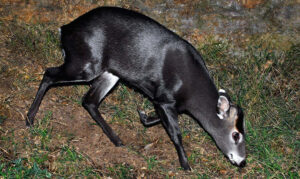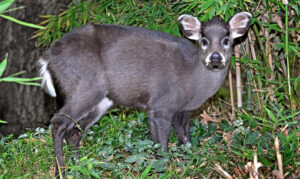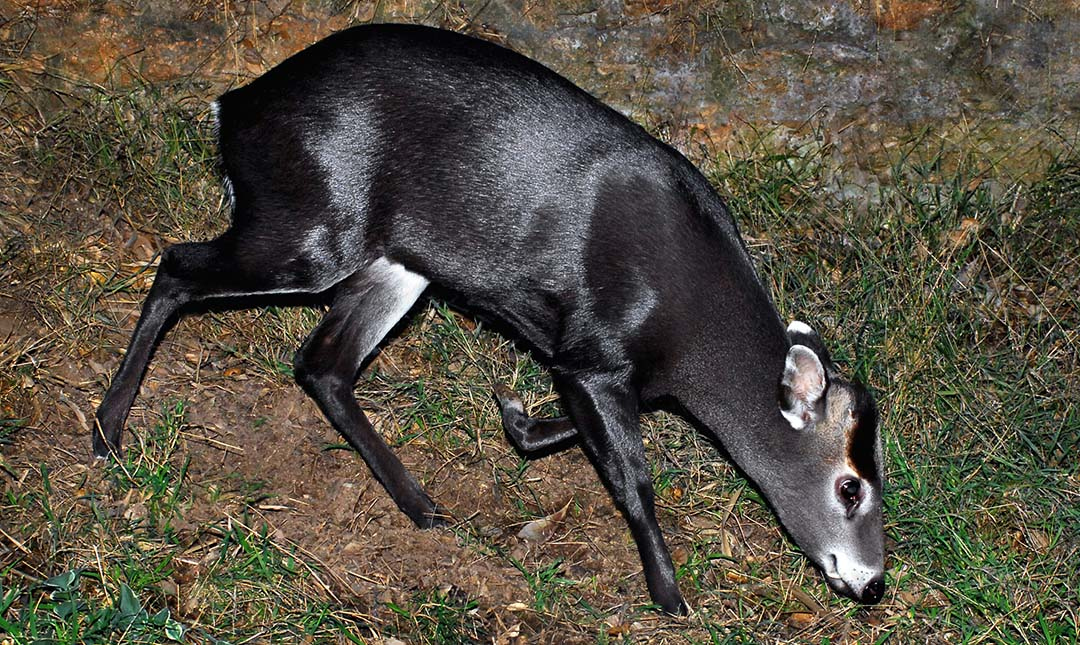About
Tufted deer are divided into three subspecies: Hubei, eastern, and western. The Zoo’s tufted deer are western, the largest of the three subspecies.
Tufted deer only come together to mate and will otherwise fiercely defend their home territories. Males and females are roughly the same size, but males have small, unbranched antlers. These are not useful when fighting, and in fact are often obscured by a tuft of hair. They use their antlers to push their enemy until he falls off balance and will then use their short, tusk-like upper canines to fight. Their main predators are leopards and humans, and when tufted deer run for safety, their tails flap to alternate between brown and a white target, and this confuses the hunter to help the deer escape. When alarmed, tufted deer make barking sounds like dogs. Males will also bark to attract mates.


Male tufted deer have small, unbranched antlers. These are not useful when fighting, and in fact are often obscured by a tuft of hair.
Habitat
Throughout southeast Asia, including Burma and southwestern China. They live in jungles at relatively high elevation, from 1,000 to 15,000 feet.
Diet
Tufted deer are herbivorous and will both graze (eat grass) and browse (eat leaves and shoots). They also like twigs and some types of fruit.
PHYSICAL CHARACTERISTICS
Adult western tufted deer are from 43 to 64 inches long and stand 25 to 28 inches high. They can weigh anywhere from 37 to 110 pounds. Their body is chocolate brown with a white belly and gray and white head and neck. They have a stomach with four chambers and chew their cud like cows. Baby tufted deer have a row of white spots on each half of their back that turn brown and disappear when they’re about two years old. They begin living on their own at six months and can live to be fifteen years old.
Location Within the Zoo
You’ll find this animal on the hillside by Neil Papiano Play Park. See Zoo Map.


